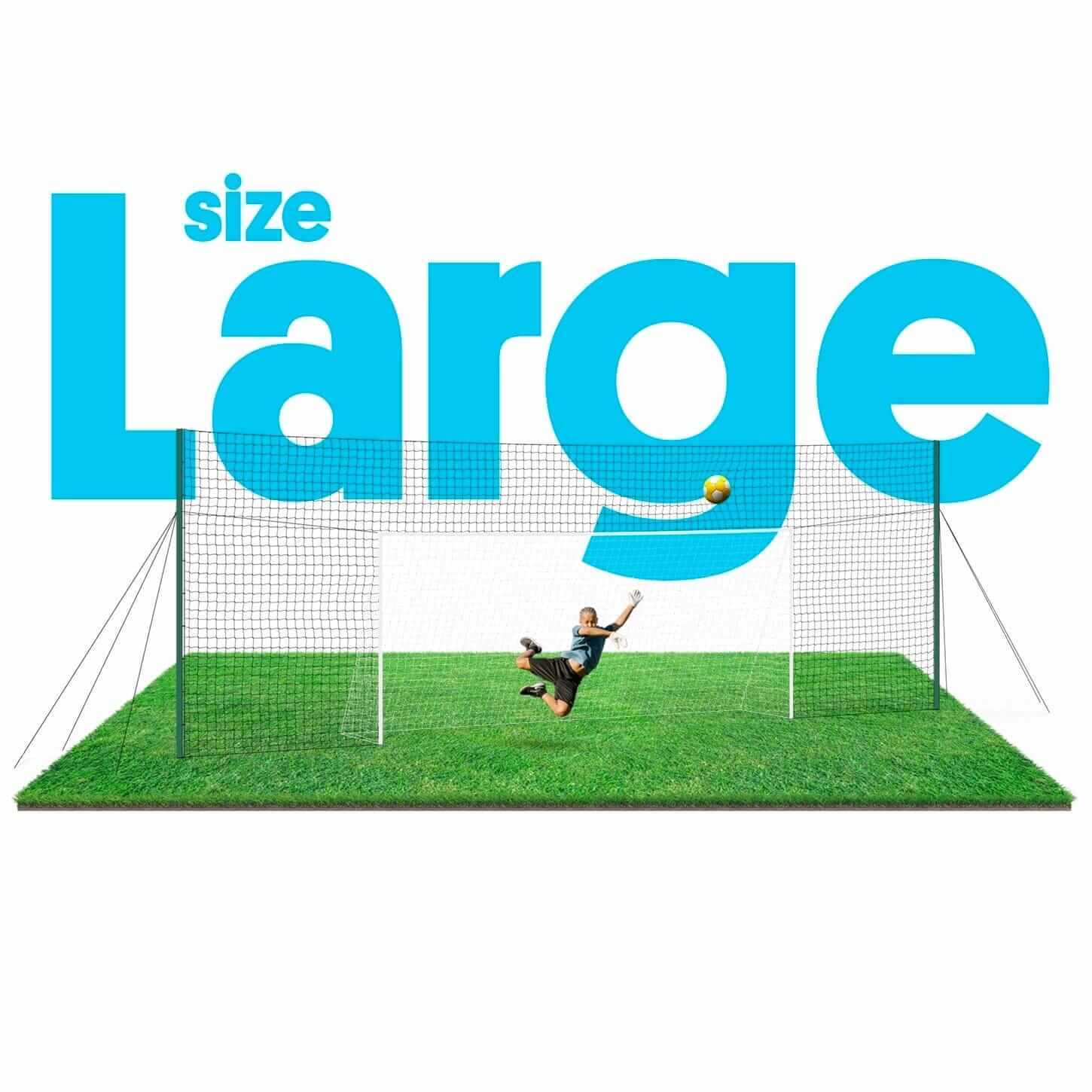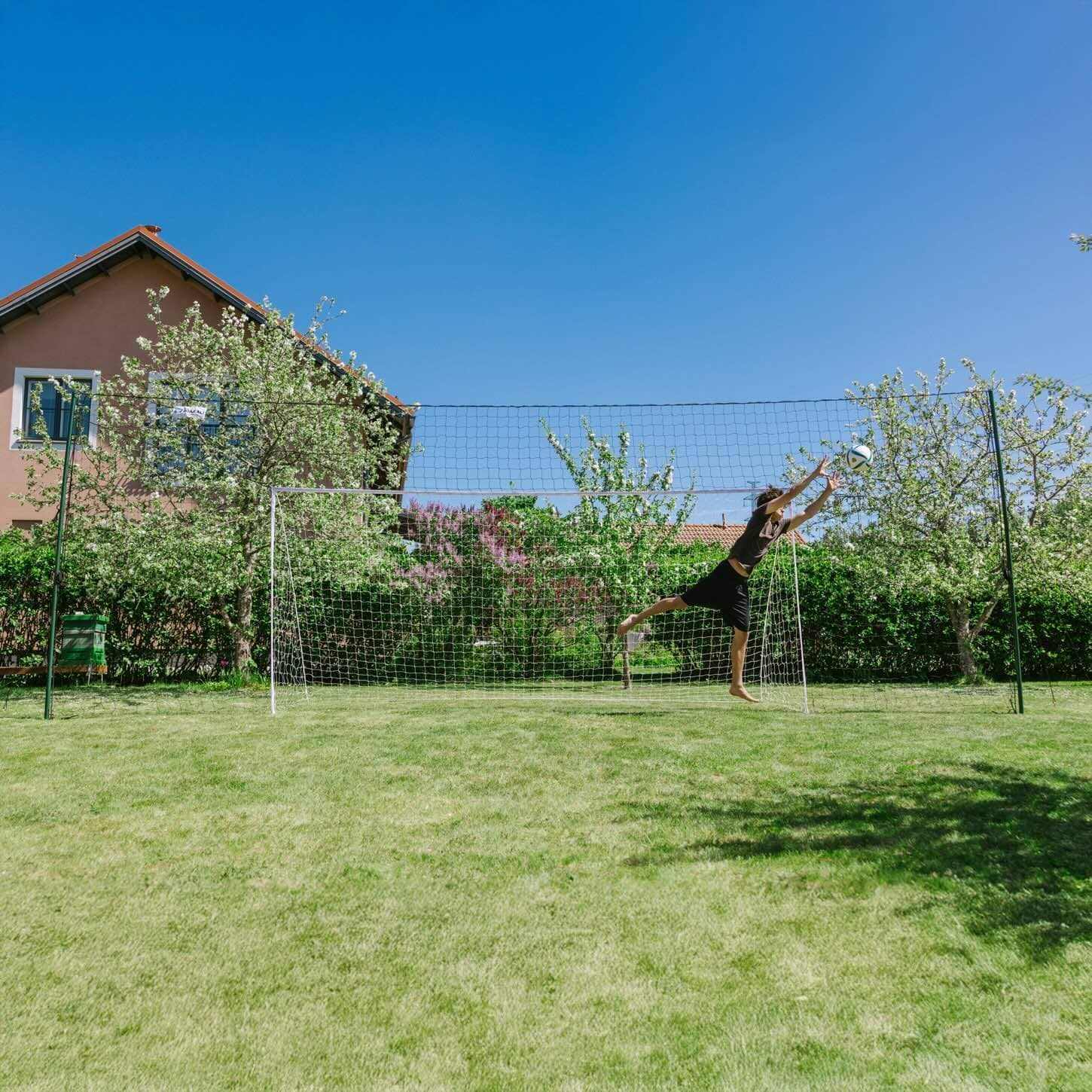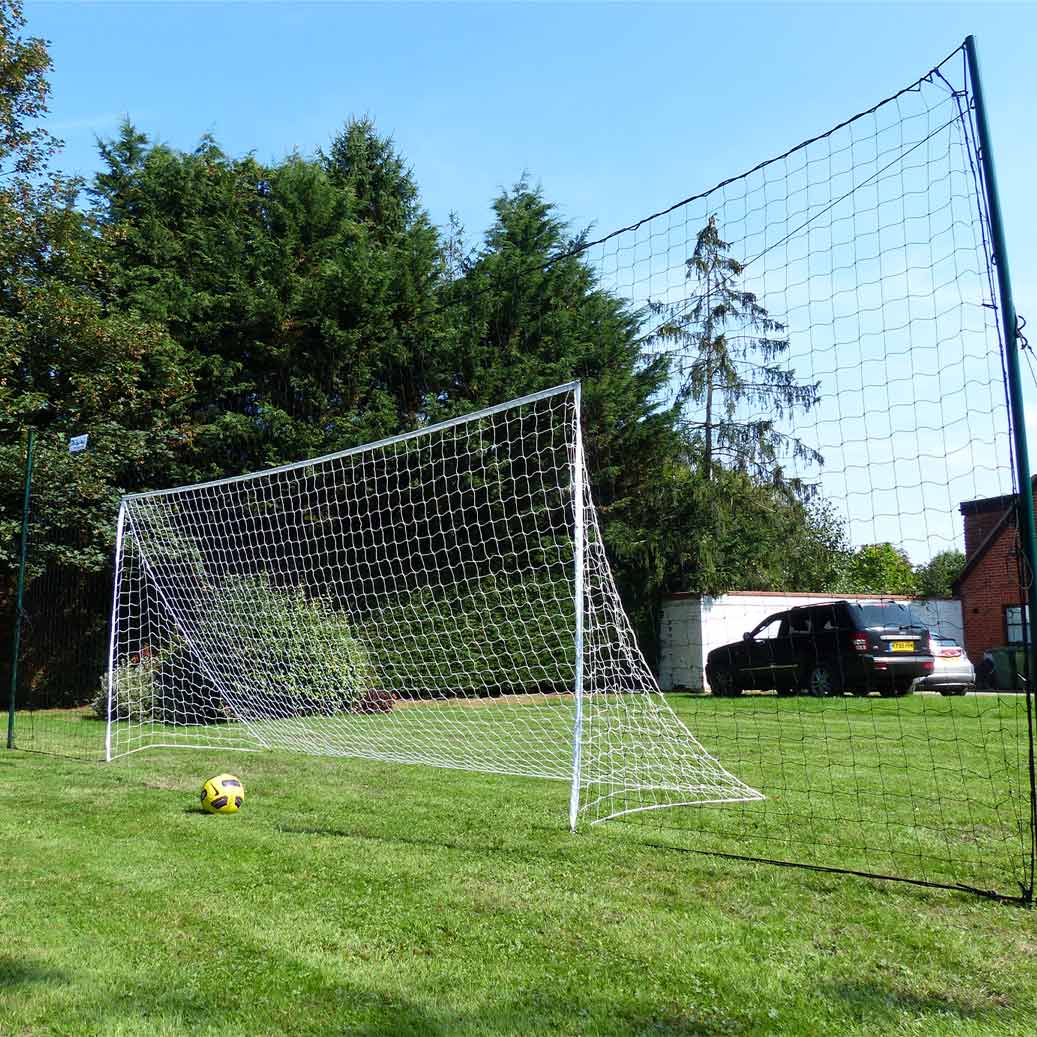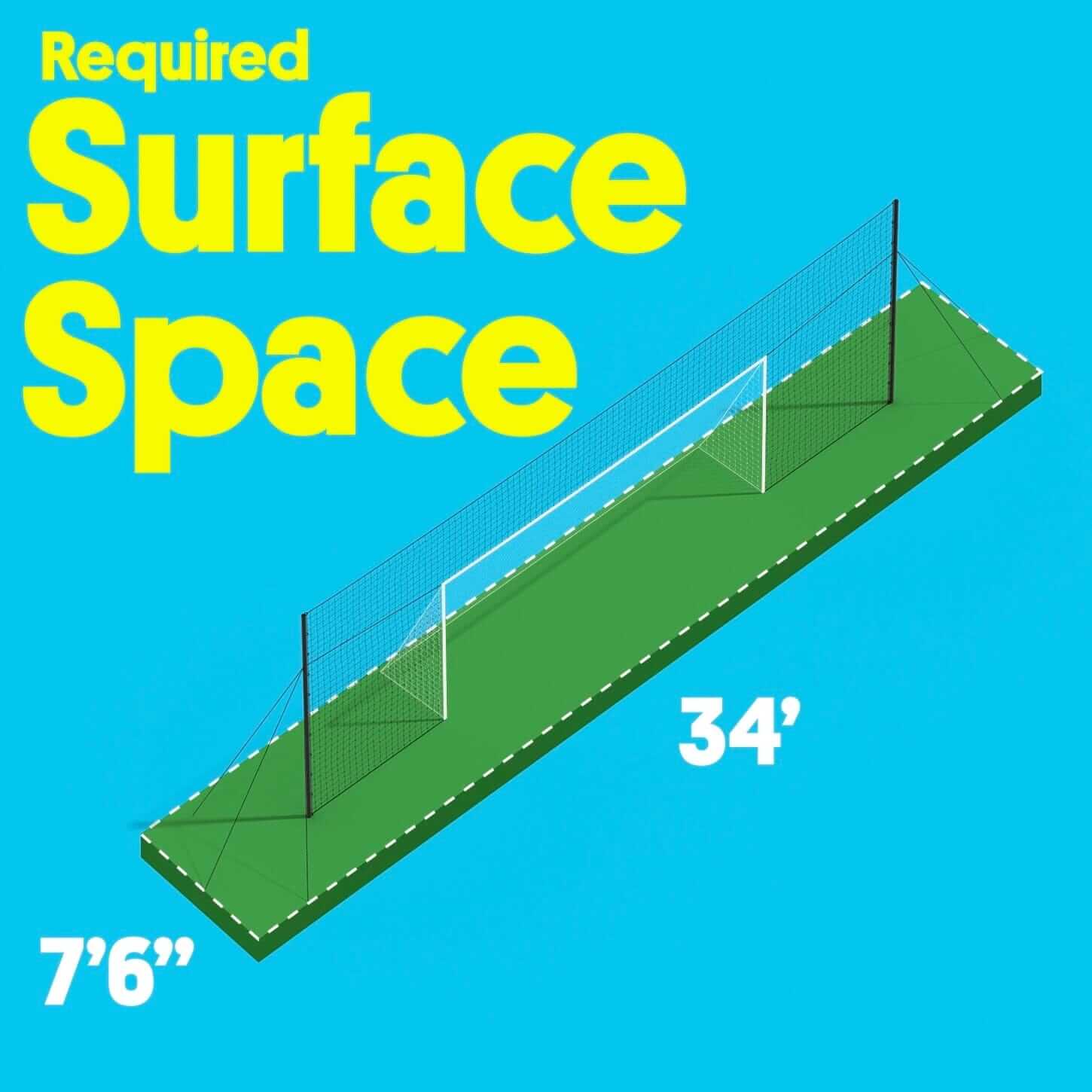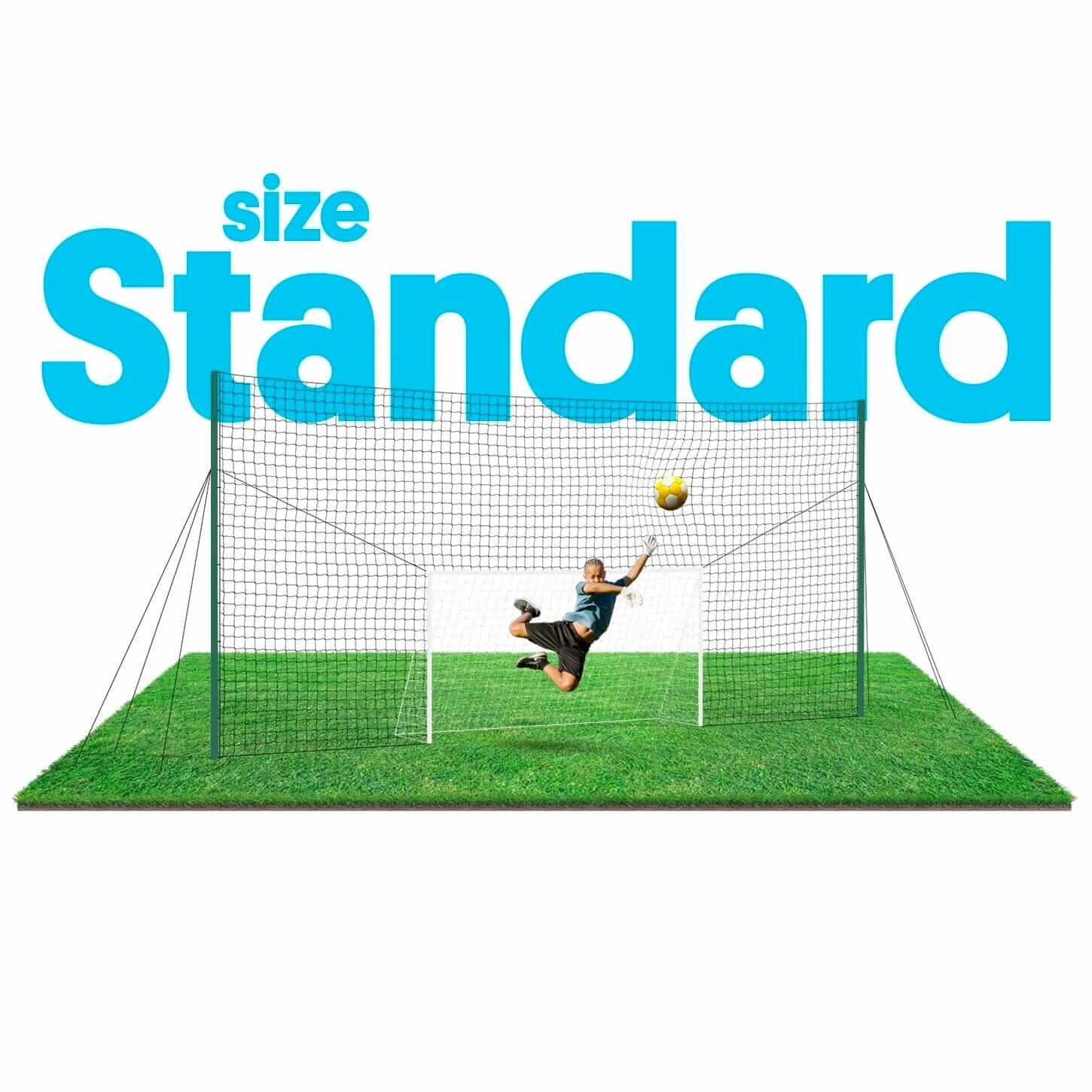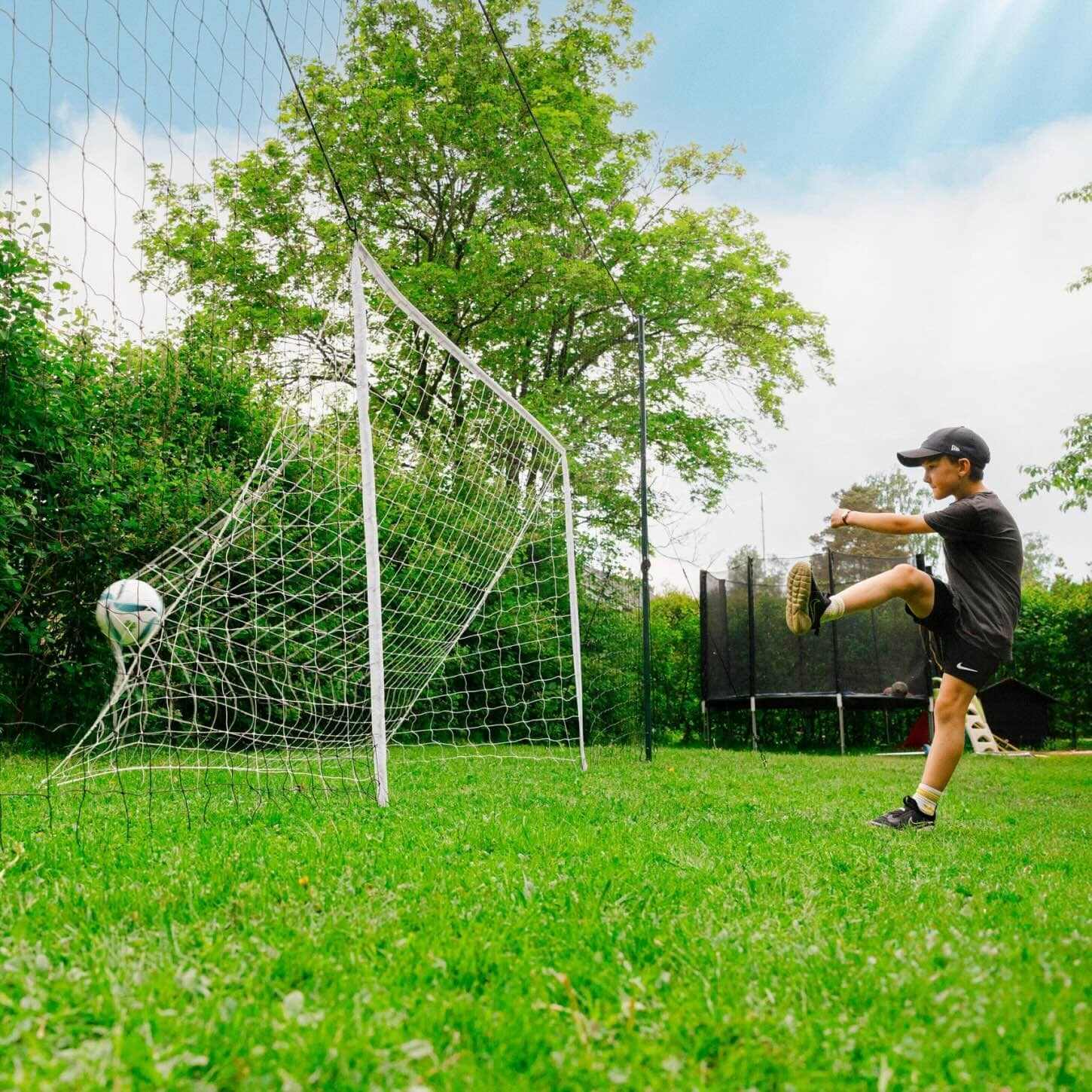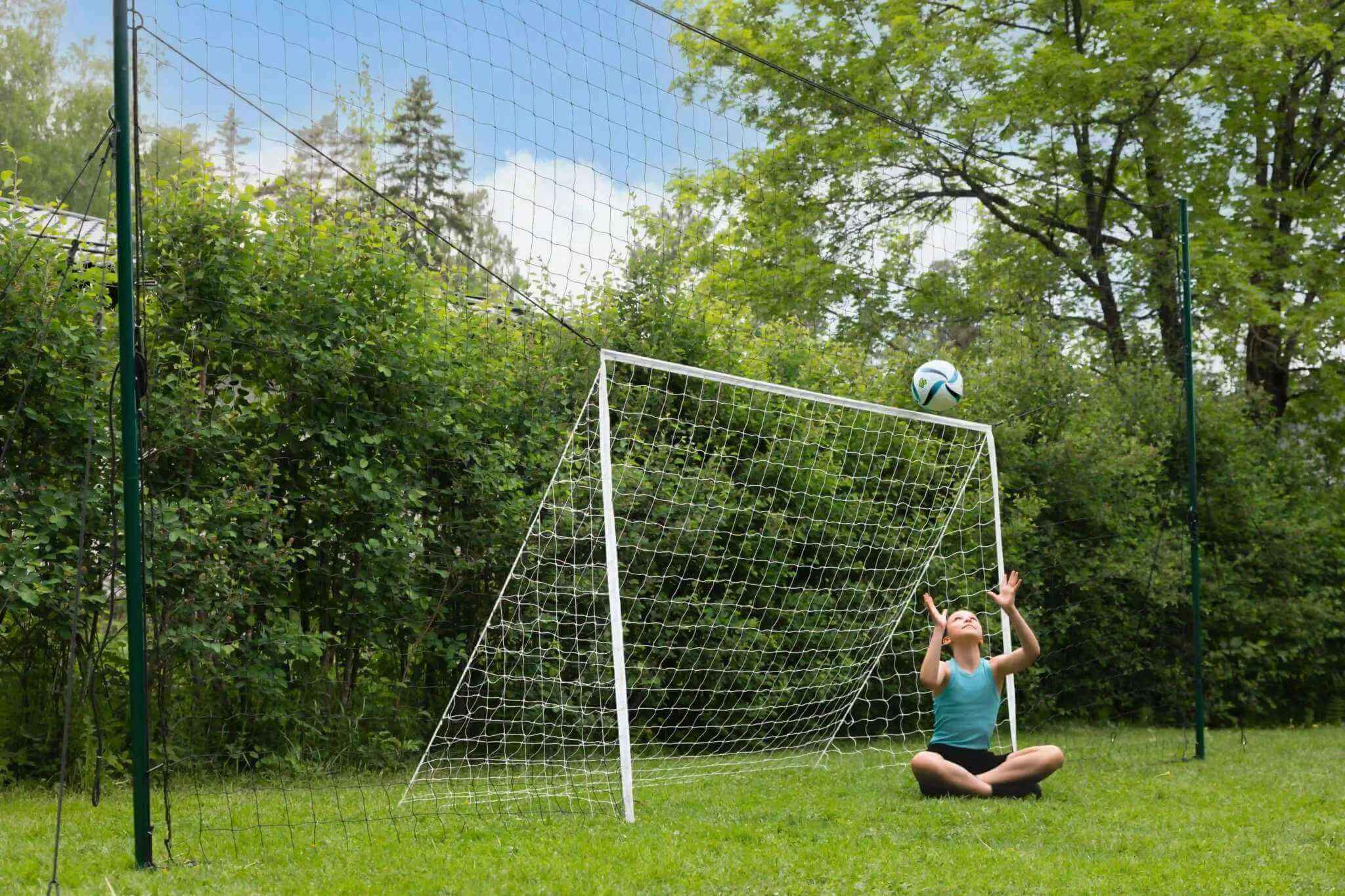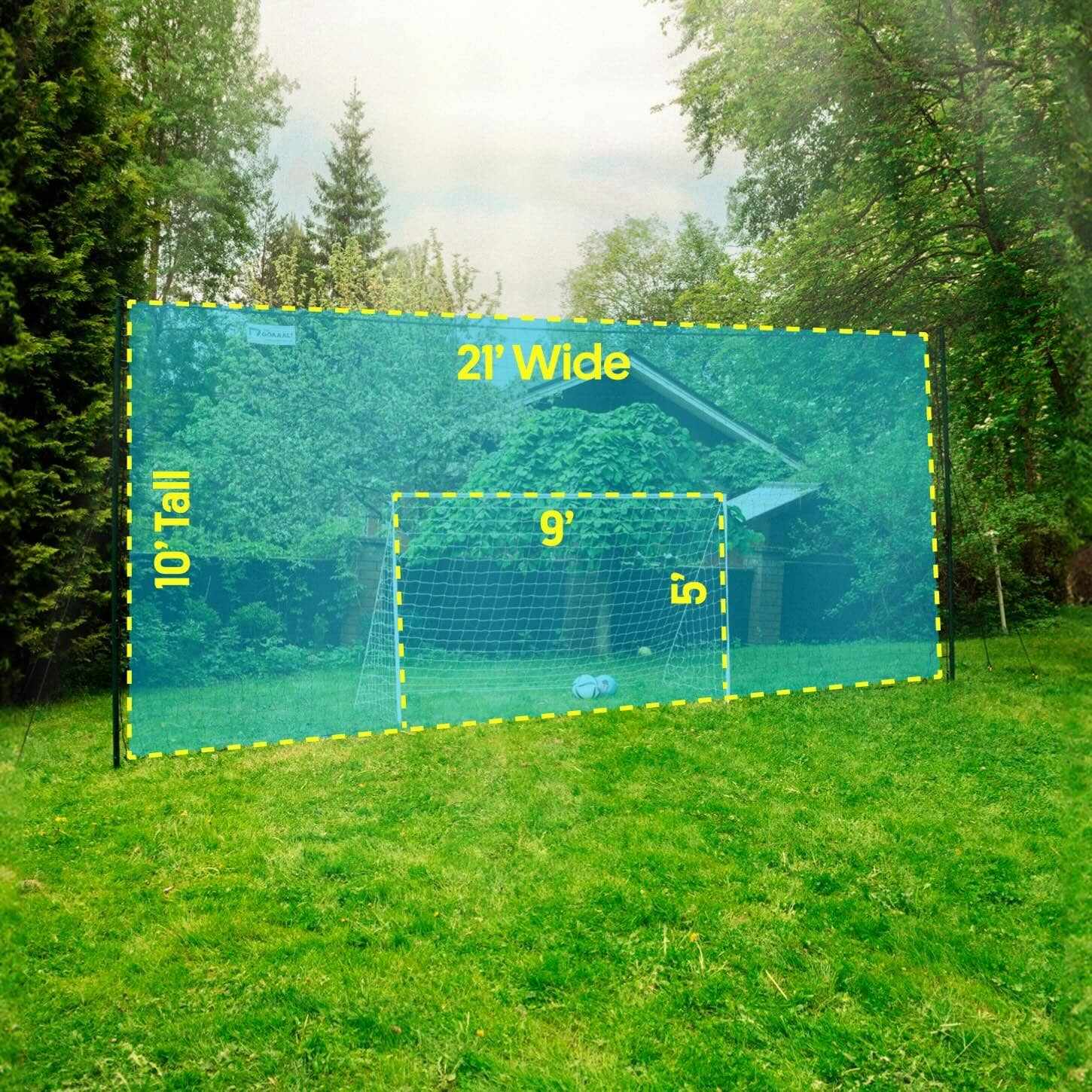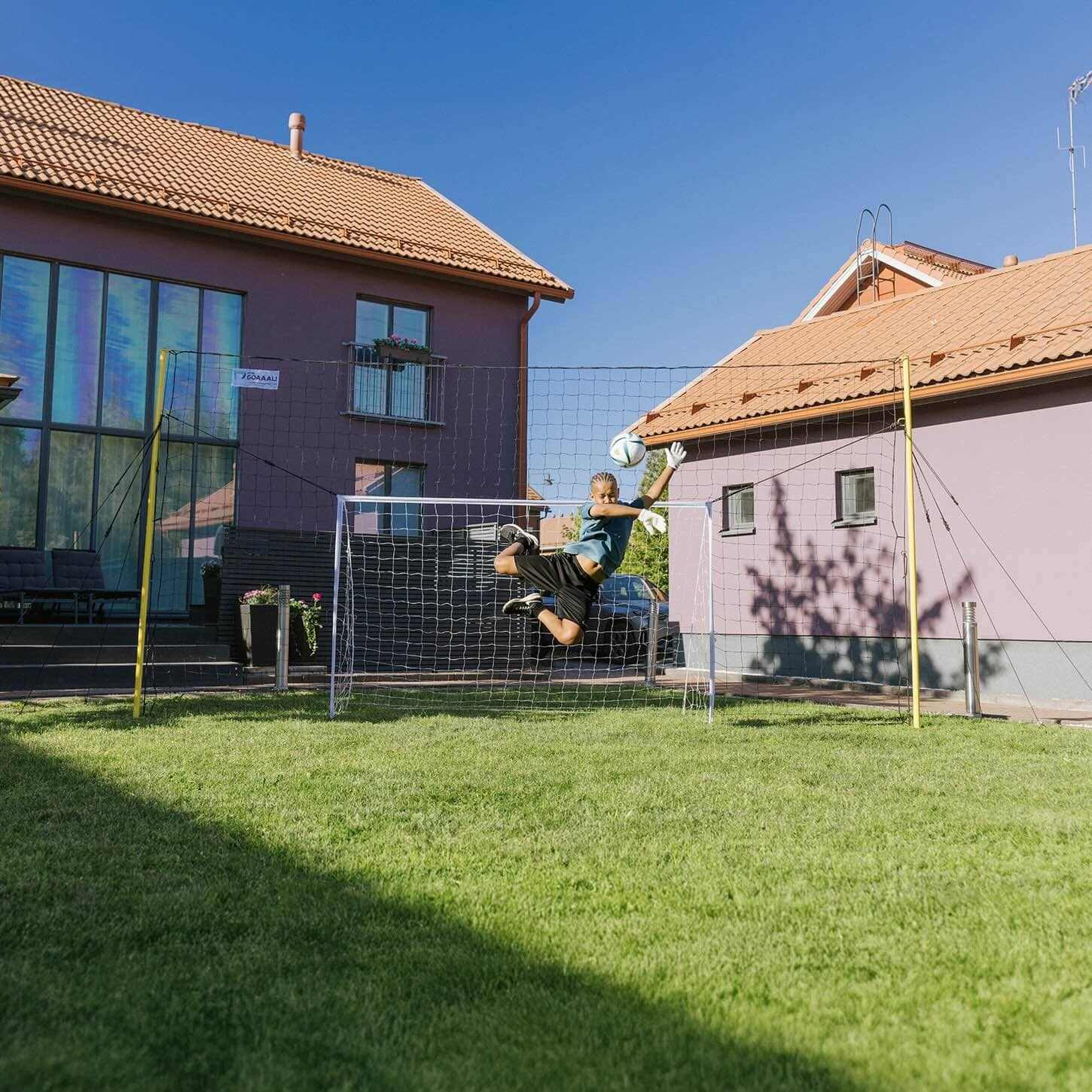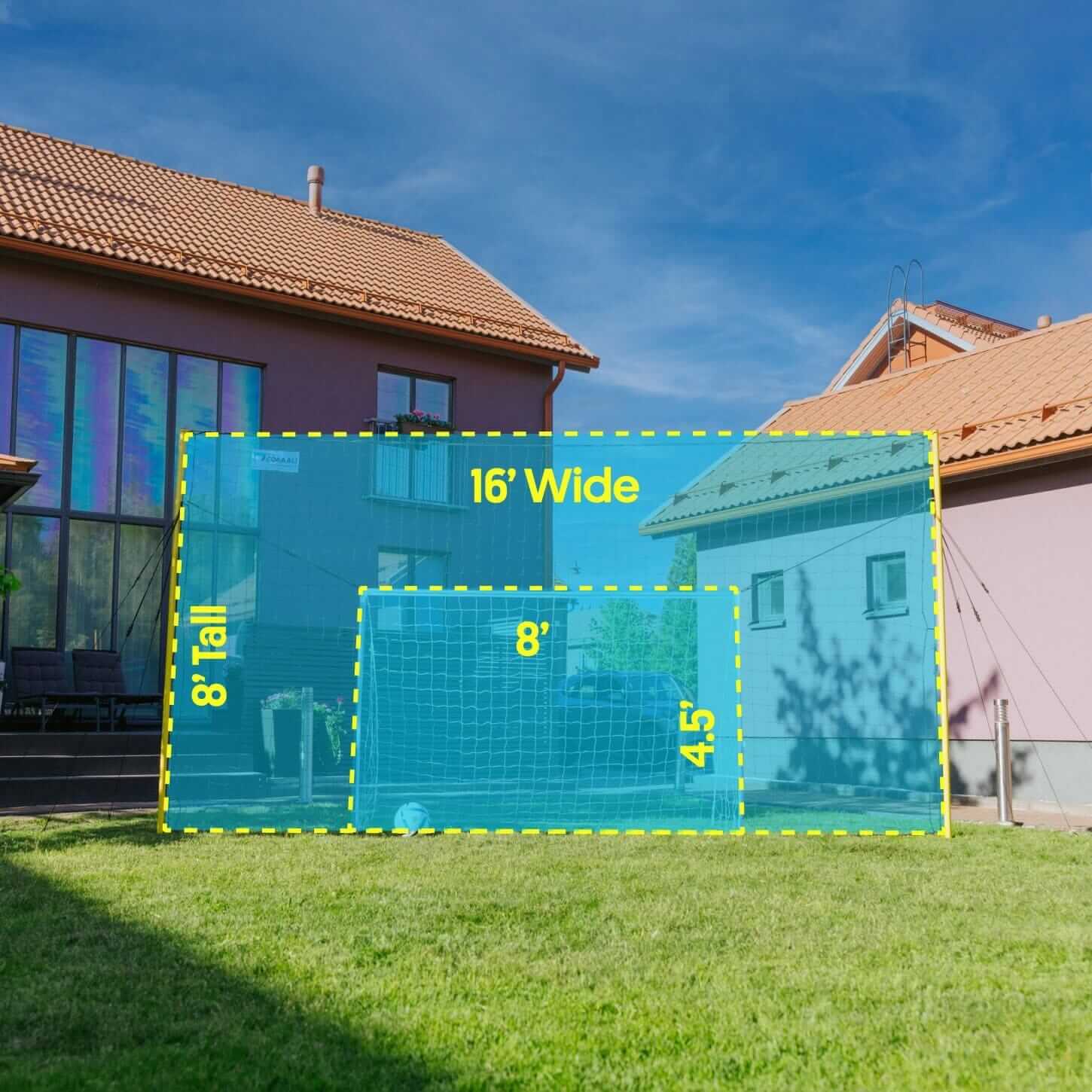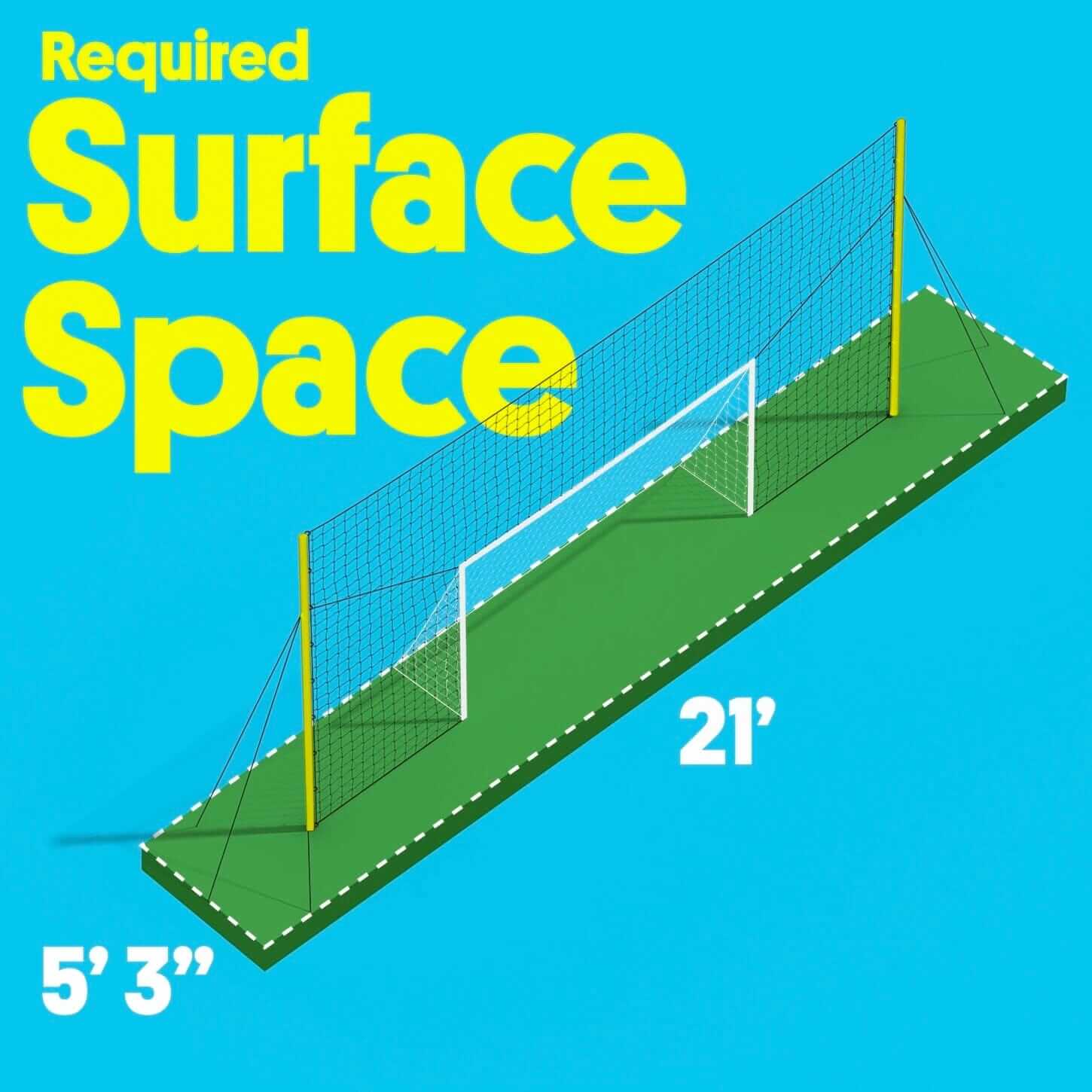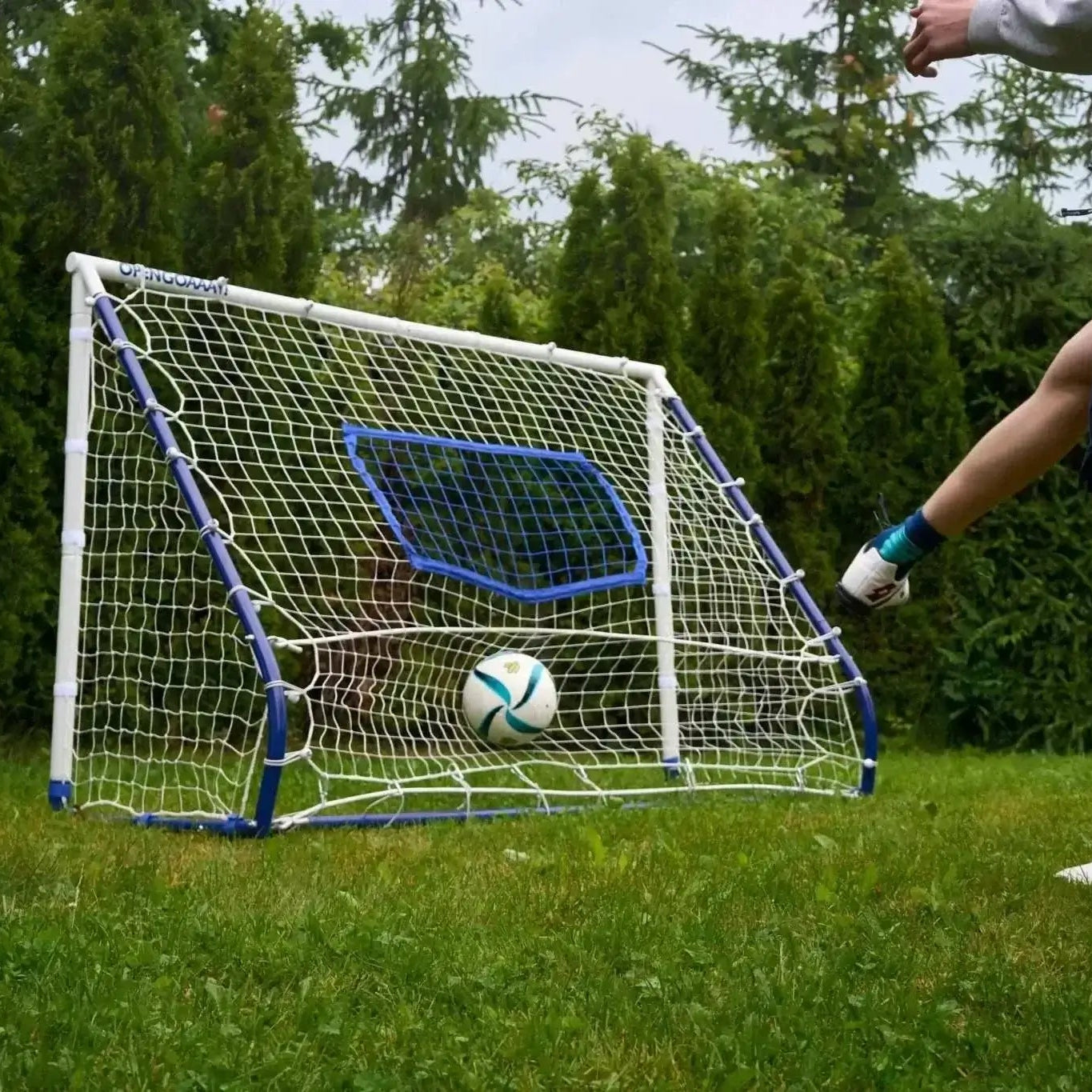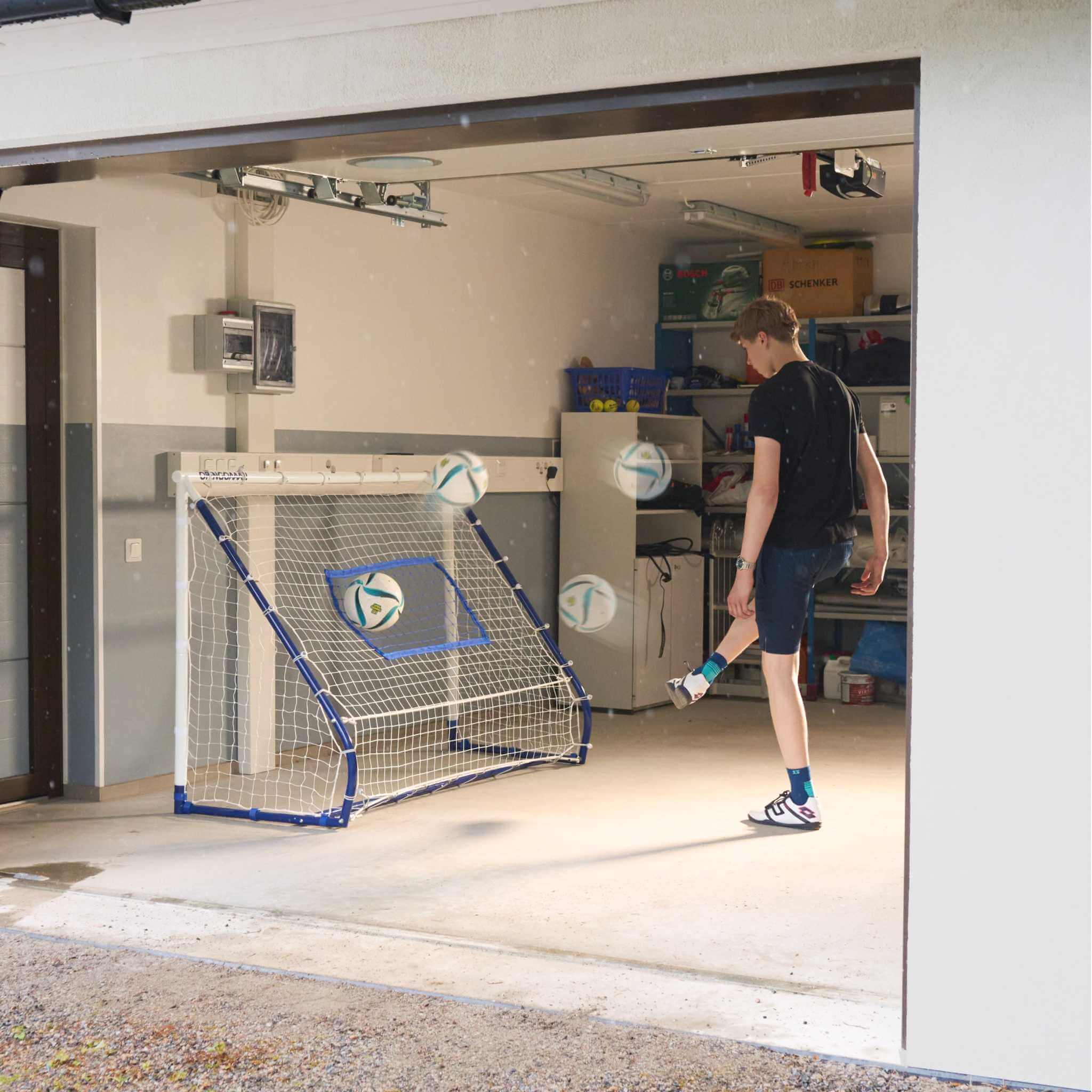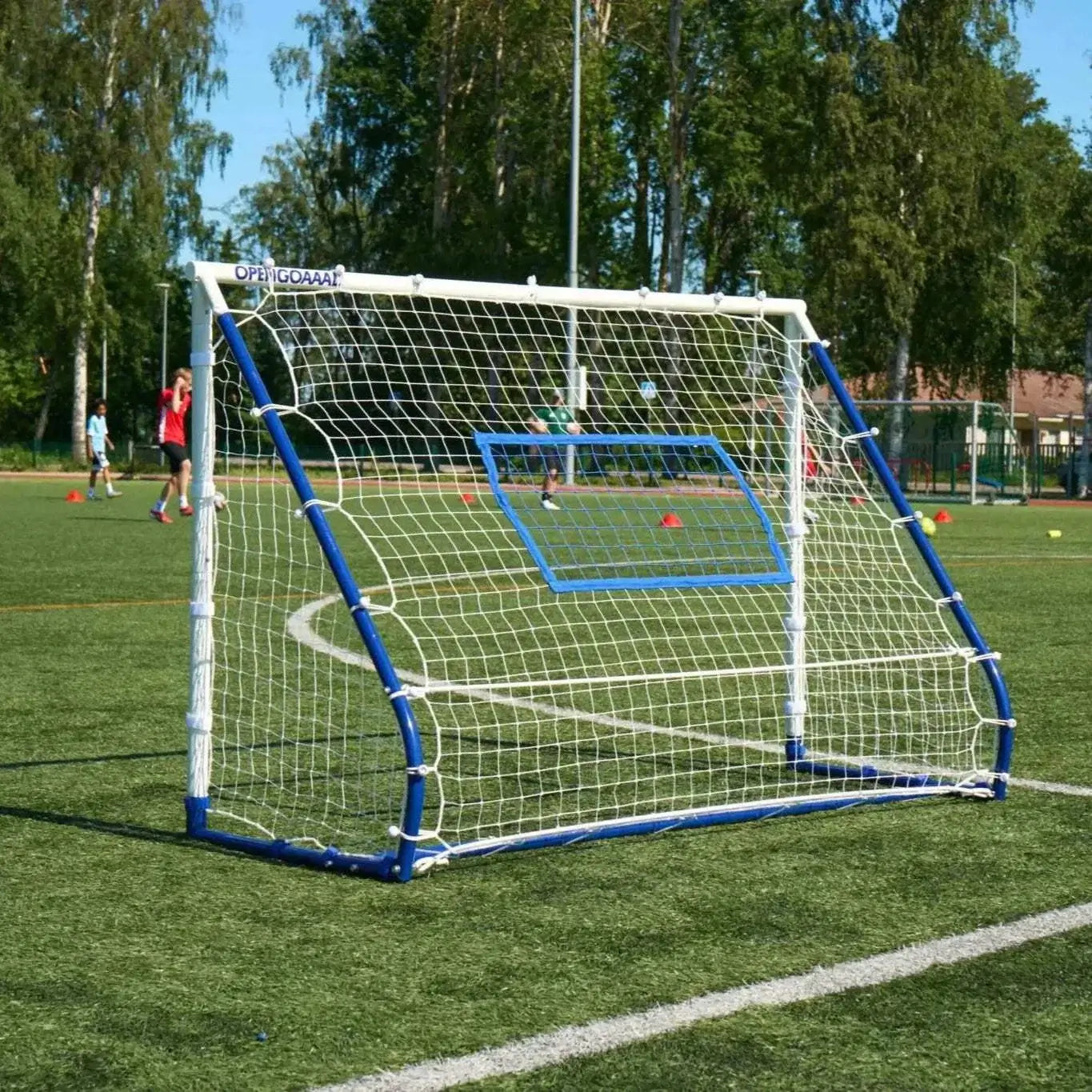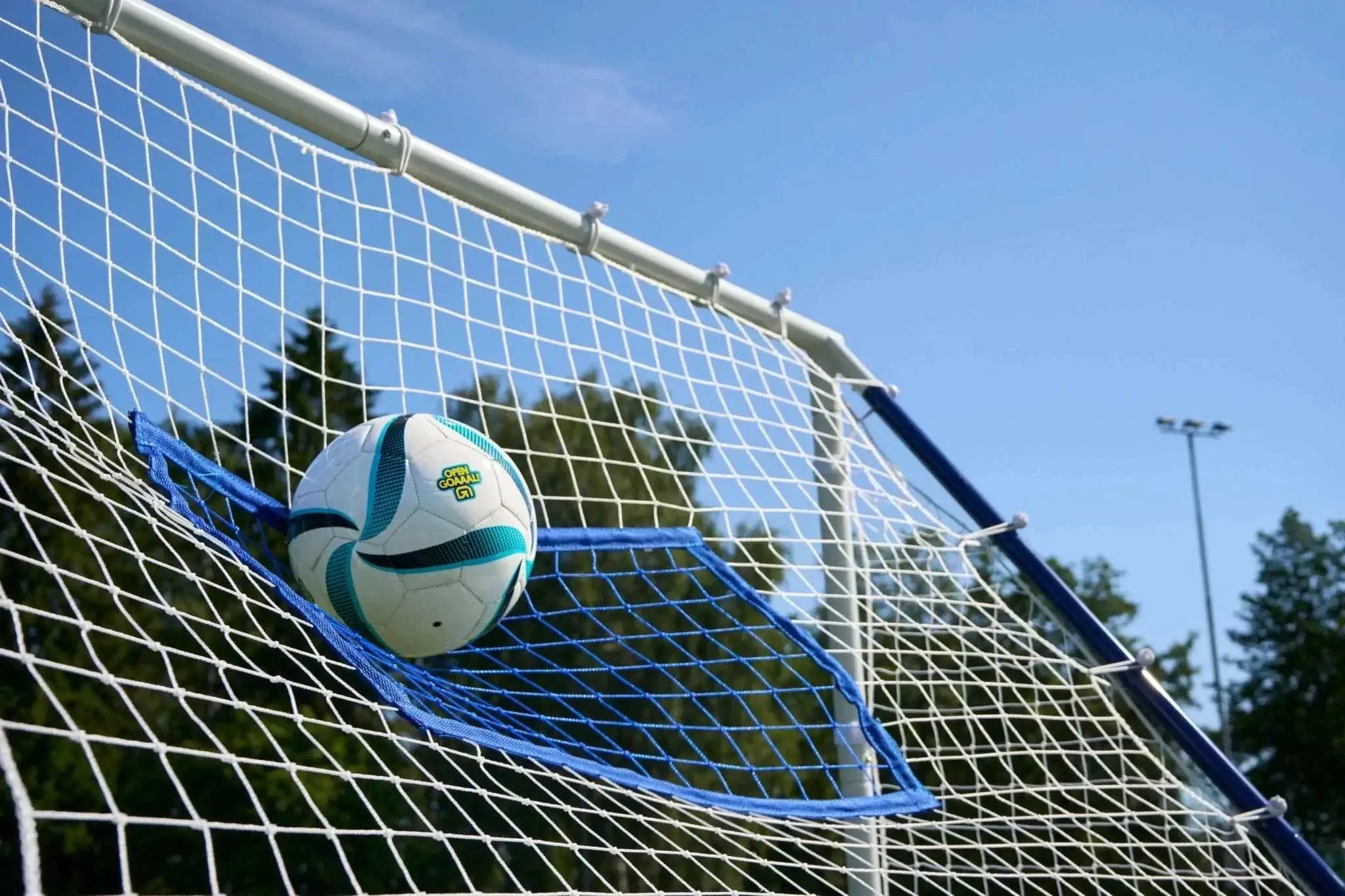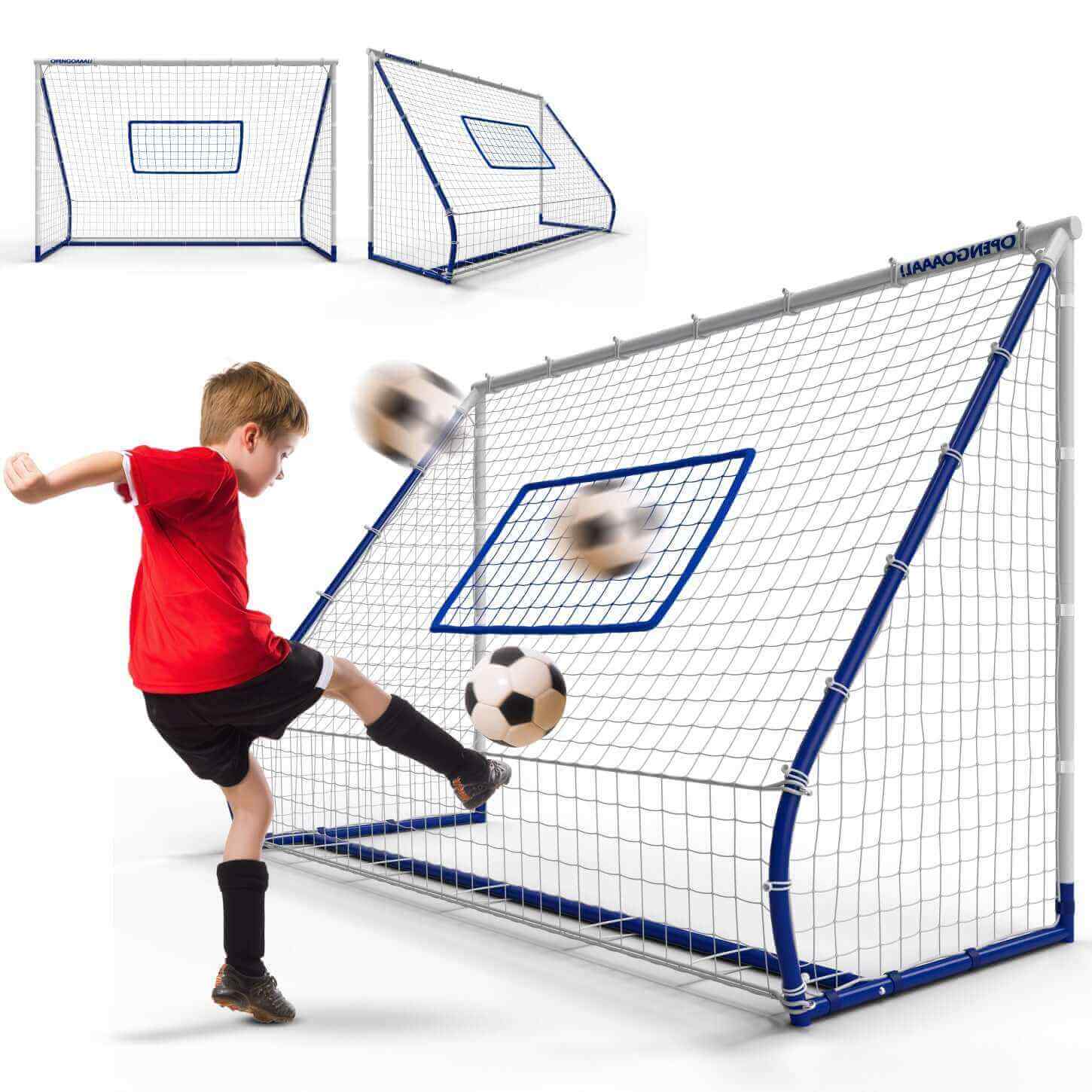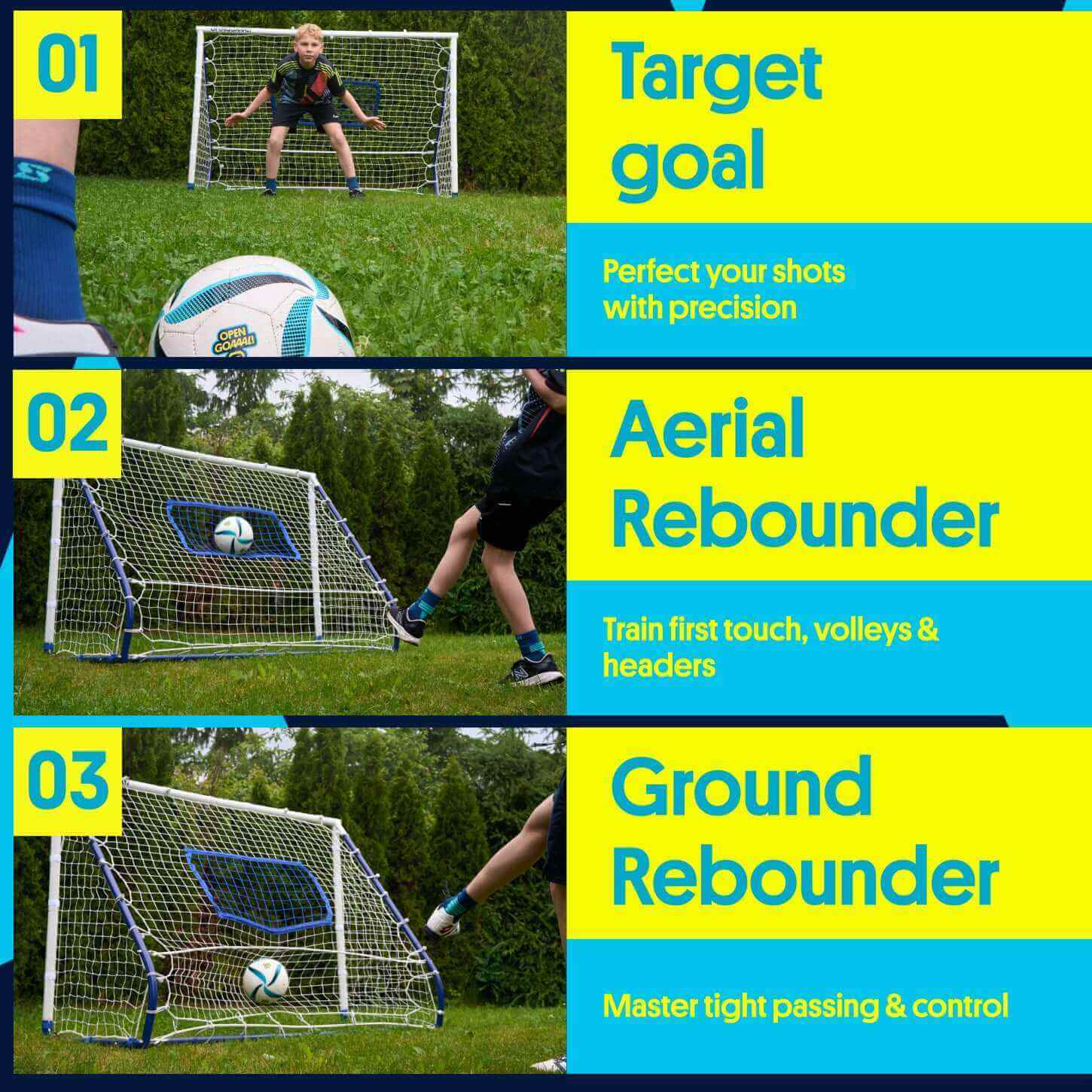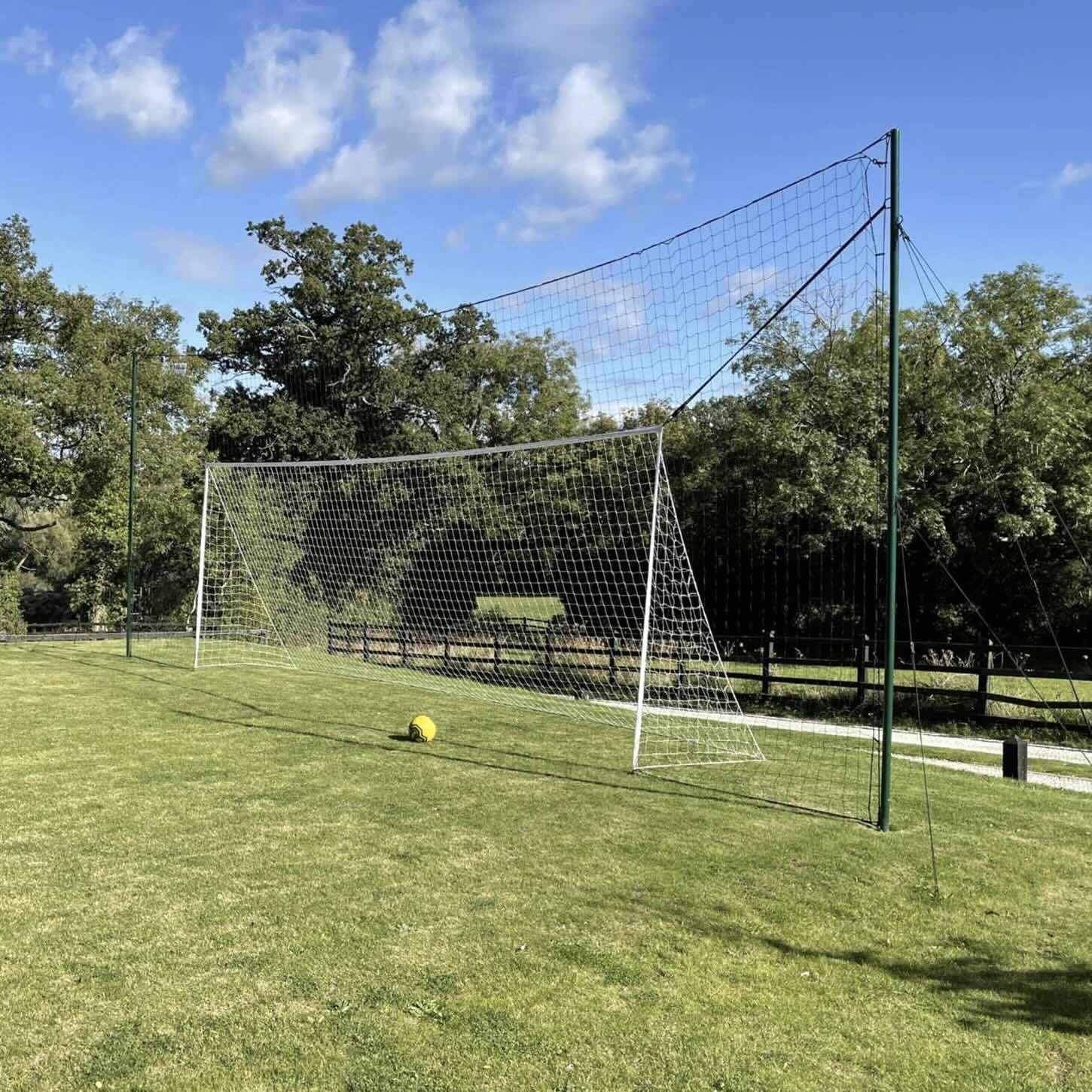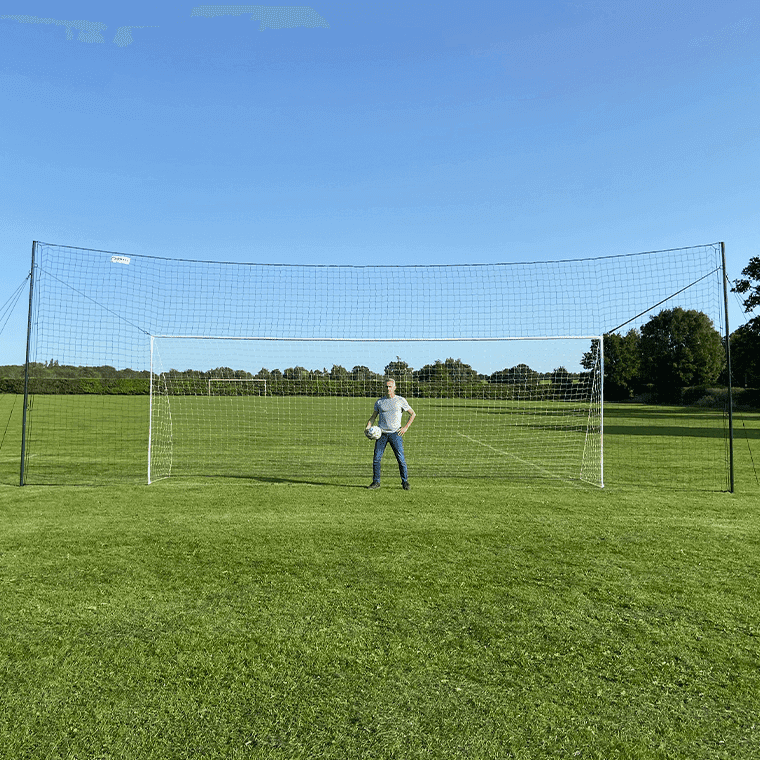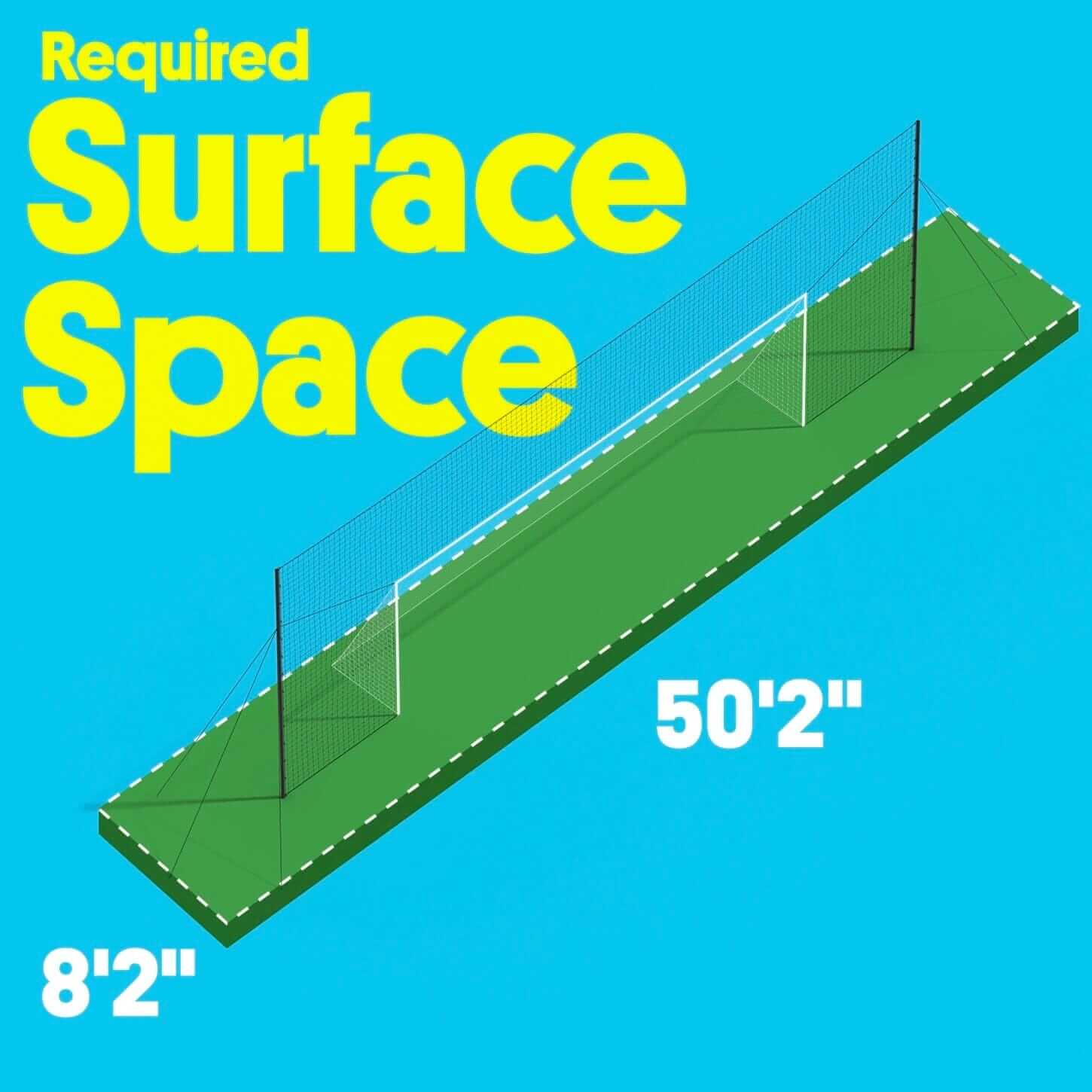There are few better ways that a soccer parent can support their young athlete than giving them the space they need to practice.
If you want to take things to the next level, you could even build a backyard soccer field for them with turf, soccer rebounders, lines, and lighting.
In this guide, we want to appeal to the DIY moms and dads out there who are planning to design a soccer field in their backyard.
Things to Consider When Making a Backyard Soccer Field
If you’re planning to build a soccer field backyard, there’s likely a million different things running through your mind.
Here are some of the initial factors you’ll want to plan out as you design a home soccer field.
Size and Layout
The size and layout of your backyard will determine the size and dimensions of the soccer field you can build. The average soccer field is 75 yards by 120 yards long. For the typical homeowner, this is out of the question.
So, you’ll need to develop a design using the dimensions you have to recreate the proper shape of a soccer field on a smaller scale.
For example, if you have four kids that play soccer, you’ll want to make sure it’s at least big enough to accommodate them plus a couple of friends. A 30-50 yard soccer field would be optimal for this.
Lighting
If you’re building a small soccer field in your backyard and you intend on letting the kids play at night, you’ll need to have some form of lighting installed. This is quite an undertaking depending on the size of the field and how bright you intend on making the field.
For a backyard soccer field, you should use LED sports lighting. LED lights provide bright, energy-efficient lighting that is ideal for outdoor sports fields. They also have a longer lifespan compared to traditional lighting options, which means they will require less maintenance and replacement over time.
Additionally, LED lights can be directed to specific areas of the field, allowing you to control the amount of light in certain areas and minimizing light pollution.
Fencing
To make your backyard soccer field legit, you need to make sure the soccer ball stays on the field and doesn’t go into neighboring yards, roadways, or wooded areas.
One of the best ways to ensure this is with the Open Goaaal 3-in-1 Soccer Trainer and Rebounder. The rebounder will return missed shots and vary in size from a 6x4 soccer goal to a 24x8 soccer goal.
The goal and rebounder allows your kids and young soccer players to practice shots and miss without having to worry about chasing the ball down after each shot.
Keep in mind, this only applies to the goal - you need to keep the rest of the field in mind as well. If your mini soccer field dimensions are only enough to squeeze into your suburban neighborhood, you may need to fence in the entire field.
The type of fencing you should use for a backyard soccer field will depend on the size and layout of your field, as well as your budget and personal preferences.
Some popular options include chain link fencing, which is durable and relatively inexpensive, or vinyl fencing, which is low maintenance and comes in a variety of colors and styles. If you want a more natural look, wooden fencing is another option.
Maintaining The Field
It sounds wonderful to build a backyard soccer field but who is going to take care of it? If you’re using natural grass there will be quite a bit of maintenance involved.
If you’re starting from scratch, you may even have to grow the grass yourself.
To grow grass for a backyard soccer field, you should first prepare the soil by removing any existing grass or weeds and leveling the ground. Next, add a topsoil or compost to the soil to improve its fertility.
After that, you should choose a grass seed that is suitable for your climate and spread it evenly over the soil.
Then, water the soil regularly and keep it moist until the grass has established itself. Once the grass has grown to a suitable height, it should be mowed regularly to maintain its length. Additionally, fertilizing the grass periodically will help it to grow stronger and healthier.
Permits and Zoning
In general, you may need to obtain permits for building a soccer field in your backyard, especially if the field will be a permanent structure or if it will involve changes to the grading or drainage on your property.
You should check with your local government or zoning board to find out what specific permits are required in your area.
Another factor to consider is your local homeowners association (HOA) if you have one.
Chances are, if your community has an HOA, you will not be able to build a backyard soccer field in the traditional sense. Usually HOAs prefer most properties in the neighborhood to follow a set of guidelines that ensures that all look relatively similar.
Should My Home Soccer Field Have Artificial Turf or Natural Grass?
Building a backyard turf soccer field might seem like quite the undertaking because it feels more permanent and involves making dramatic changes to your backyard. Natural grass sod only costs approximately $.48 per square foot whereas artificial turf can cost as much as $8 per square foot.
Both artificial turf and natural grass have their own advantages and disadvantages.
Artificial turf is a popular choice for backyard soccer fields because it requires less maintenance and is more durable than natural grass. Artificial grass is also a good option if you live in an area with limited rainfall or if you have difficulty growing natural grass. But, turf does not provide the same playing experience as grass.
Natural grass provides a more authentic playing experience, with a softer surface that is easier on the joints. It also has a natural look and feel.
However, natural grass requires regular maintenance, including watering, fertilizing, and mowing. It may also be affected by weather conditions, such as drought, which can cause the field to become dry and hard.
Ultimately, the choice between synthetic turf and natural grass depends on your personal preferences, budget, and the specific needs of your backyard soccer field.
What Equipment Do You Need?
If you’re trying to provide the best way for your kids to get better at soccer there are few things better than building them their own field.
It’s important to realize that taking this entire job on yourself is almost impossible unless you already have the perfect yard for it.
You’ll likely need to hire a company to level out your land and install lighting wherever needed. From there, you can handle fencing, marking, and installing the goals. You can also handle maintaining the grass or turf yourself as well.
Cost Estimates
Here’s a quick look at how much it can cost to build a soccer field in your backyard:
Excavation/Land Grading: $6,000-10,000
Seeding/Sod: $1,000-2,000
Artificial Turf: $5-10 per square foot
Fencing: $5,000-10,000
Lighting: $2,500-5,000
Home Soccer Field FAQs
How do you line a soccer field from scratch?
Use a measuring tape or wheel to determine the dimensions of the field, and mark the boundaries with spray paint or flags. From there you’ll need to mark the center of the field which is entirely dependent on how large your field is.
You’ll need to mark the penalty box, goal area, and corner arc as well. Understanding the layout of the soccer field will help ensure you do all of this properly to keep it authentic.
Are soccer fields supposed to be flat?
The soccer pitch should be relatively flat, with a slight slope to allow for drainage. However, slight variations in the field's surface are allowed and can even be beneficial for the game. The field should also be maintained in good condition, with a consistent level of grass and no holes or other hazards.
Final Thoughts
Whether you’re building your backyard soccer field out of turf or grass, there is one thing the field cannot be without and that is the Open Goaaal 3-in-1 Soccer Trainer and Rebounder.

These goals will ensure that the ball stays on the field and in play. This prevents it from going into the neighbors yard or out into the street.
You’ll save some money on fencing costs while also improving your kids' level of play and practice while they’re out in the yard.
Feel free to reach out to us if you have any questions about your DIY soccer field or the Open Goaaal Rebounder.


